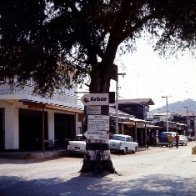How to calculate lot size
-
Recently Browsing 0 members
- No registered users viewing this page.
-
Topics
-
-
Popular Contributors
-
-
Latest posts...
-
175
Analysis Rising Tensions: Is Full-Scale War Looming on Thailand-Cambodia Border?
The RAF is woke now, Poofery doesn't win wars. -
12
Trump visit Scotland
Another country's immigration policy/problems, that do not adjoin your country have nothing to do with the orange oaf. -
41
It seems that that the Covid pandemic scared people stupid
Someone do me a favor and take a look-see at this linked study from some data wonks at Stanford. It's blocked here where I'm staying. https://archive.is/9iKyF#selection-3685.0-3695.127 Here's where I found it: Landmark Stanford Study Finds COVID Jabs ‘Saved Far Fewer Lives Than First Thought’ | The Gateway Pundit | by Ben Kew (https://www.thegatewaypundit.com/) I realize that the Gateway Pundit is a right wing rag. But that doesn't mean they're wrong... It'll be interesting to see if the study gains traction. I'm not going to repeat any of their claims, leaving that to the curiosity (or lack thereof) of the readers here. -
4
Unannounced visit of immigration at home
2018 they came to us for tea and cookies. -
27
Report French Tourist Dies Outside Koh Phi Phi Police Station After Night of Drinking
What a sad way to go. RIP.. -
93
Traffic Pattaya Introduces Smart Crossings for Enhanced Safety
I can think of any idea that all suggested. Flashing lights on the road , stop lights. poles that pop up. At the end of the day, especially at Beach Rd Pattaya they need, either; 1 Cameras at traffic lights to take video footage as evidence when a car /bike ignores a pedestrian crossing or actual 2 RTP getting off their ass and randomly monitor that crossing. If anyone breaks the rules it's not a peanut fine. Let's say 1000 baht fine as a suggestion. But that will never happen as the RTP like their Tea money more than the life of a pedestrian!
-
-
Popular in The Pub












Recommended Posts
Create an account or sign in to comment
You need to be a member in order to leave a comment
Create an account
Sign up for a new account in our community. It's easy!
Register a new accountSign in
Already have an account? Sign in here.
Sign In Now